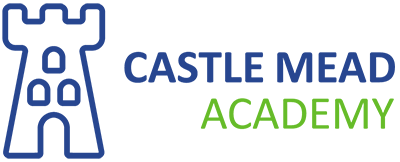What makes the mathematics curriculum so special?
The mathematics curriculum at Castle Mead is based on the following underlying principles – that there are mathematical rules that are immutable and that these can be applied again and again to different types of numbers and situations, truly developing a schema of mathematical knowledge. It is an anathema to the Castle Mead maths department that maths is considered as a set of compartmentalised ‘tricks’; at Castle Mead we firmly believe that maths is not ‘Magic’ but is based upon a set of fundamental ideas and rules that have built over millennia by mathematicians.
The practice of learning and applying these fundamental rules is what builds a scholar’s mathematical toolbox. In each academic year the curriculum moves from practising using a mathematical concept, such as proportional reasoning or equality, from a purely numerical context, to generalised situations (algebra) and then on to applied contexts through geometry and statistics. Models and representations such as bar models and double-sided counters provide supports and scaffolds that link the concept to the context as it becomes more abstract.
How is the mathematics curriculum enacted in a way that honours its beauty, richness and distinctiveness?
In mathematics lessons you will see both the teaching of component skills that need to be in a mathematician’s toolbox as well as opportunities to use one or more skills to solve a problem.
Examples of this: a lesson on learning and practising the skill of multiplying brackets that contain algebraic expressions is a ‘toolbox’ lesson in which a scholar is developing a very specific skill, whereas another lesson in which areas of shapes are calculated, including those where lengths are expressed algebraically, is an example of where you would see those ‘toolbox’ skills being applied. Real life context will be used where appropriate but not all mathematics at key stage 3 and 4 can be directly applied to real-life. Some mathematical skills such as solving quadratic equations are not easily applied directly to a context without increasing the difficulty beyond that of the current capabilities of the scholars but are needed for potential avenues of study at a later date. You will also see a focus on mathematics as a form of communication with setting out of methods and understanding of mathematical vocabulary being emphasised in lessons.
How does the mathematics curriculum equip scholars with knowledge that provides them with new ways of thinking about the world and has the capacity to take them beyond their own original experiences?
Mathematics in the wider world is most commonly used as a tool within a context, to calculate, to compare, to contrast and to communicate with. Without a mathematical framework, the work of scientists, engineers, economists and architects, among many others, would be impossible. But the study of the world of numbers and relationships of pure mathematics also has a beauty and richness of its own. Nine mathematicians have been chosen as the names of the maths groups to provide a window into the great heritage of the mathematics that our scholars are learning in the present day, putting names to a few of the giants on whose shoulders they stand. The mathematicians have been chosen to span time and space from Hypatia in ancient Greece to the Iranian mathematician Mirzakhani the first female to win the prestigious Fields Medal in 2014. Introducing them to Andrew Wiles, who worked on the centuries old problem of Fermat’s last theorem for many years of his career, helps them to see that the study of mathematics in and of itself is a worthwhile endeavour. But without Al-Khwarizmi, the godfather of algebra who lived over a thousand years ago in Persia, Wiles would never have been known. Mathematicians also represent every group of people who work together to build on previous knowledge to solve the pressing problems of their time. Florence Nightingale used statistics in the 19th century to transform the medical profession while Katherine Johnson was a ‘calculator’ for NASA in the 20th century. Fibonacci studied rabbits to produce his eponymous sequence in the 13th century while Alan Turing used the same abilities of pattern spotting and familiarity with sequences to crack German codes in the second World War.
How does the mathematics curriculum reflect intelligent interdisciplinarity, to allow scholars to explore meaningful connections?
In the subjects of science, geography, design technology and computer science the tools learnt in mathematics lessons are put into use. Linked content areas are mapped so that there is two-way communication between the curriculum areas e.g., map scales in geography with ratios in maths. Departments work closely together to ensure that each subject approaches these parts of their wider curriculum in a consistent way. A two-way link with the science department has been developed with science teachers being trained on how the maths department teaches algebraic manipulation to ensure that when they use formulae in physics the scholars are hearing the same language and seeing the same methods as they saw in their maths lessons. While the scientific formulae that scholars will need to know for science are specifically used in maths lessons to demonstrate the algebraic skills the students need to develop and reinforce their understanding of their use in science. The model of calculators used in lessons is also identical!
Subject Leader/s
Ms R Vaughan
[email protected]
